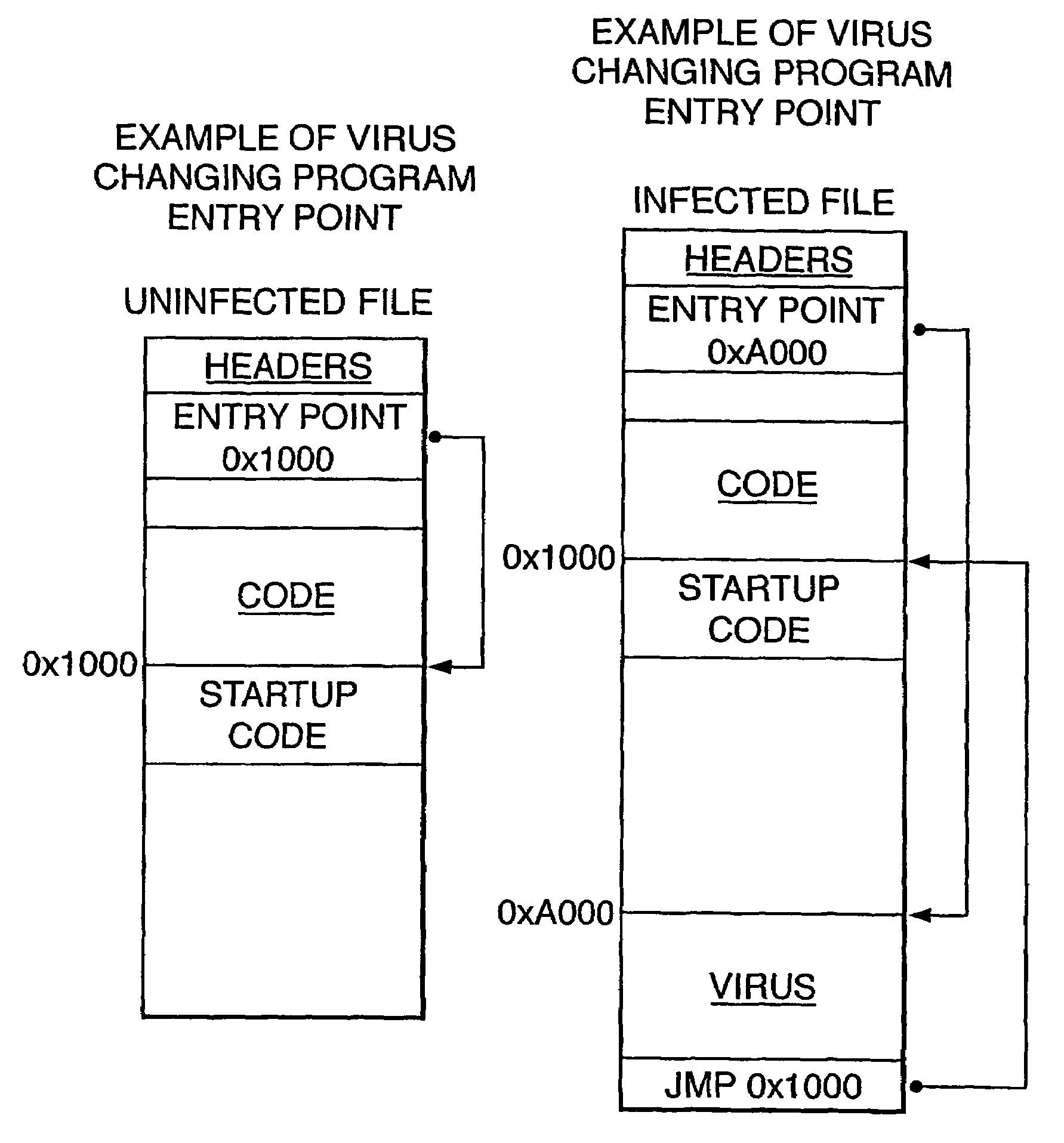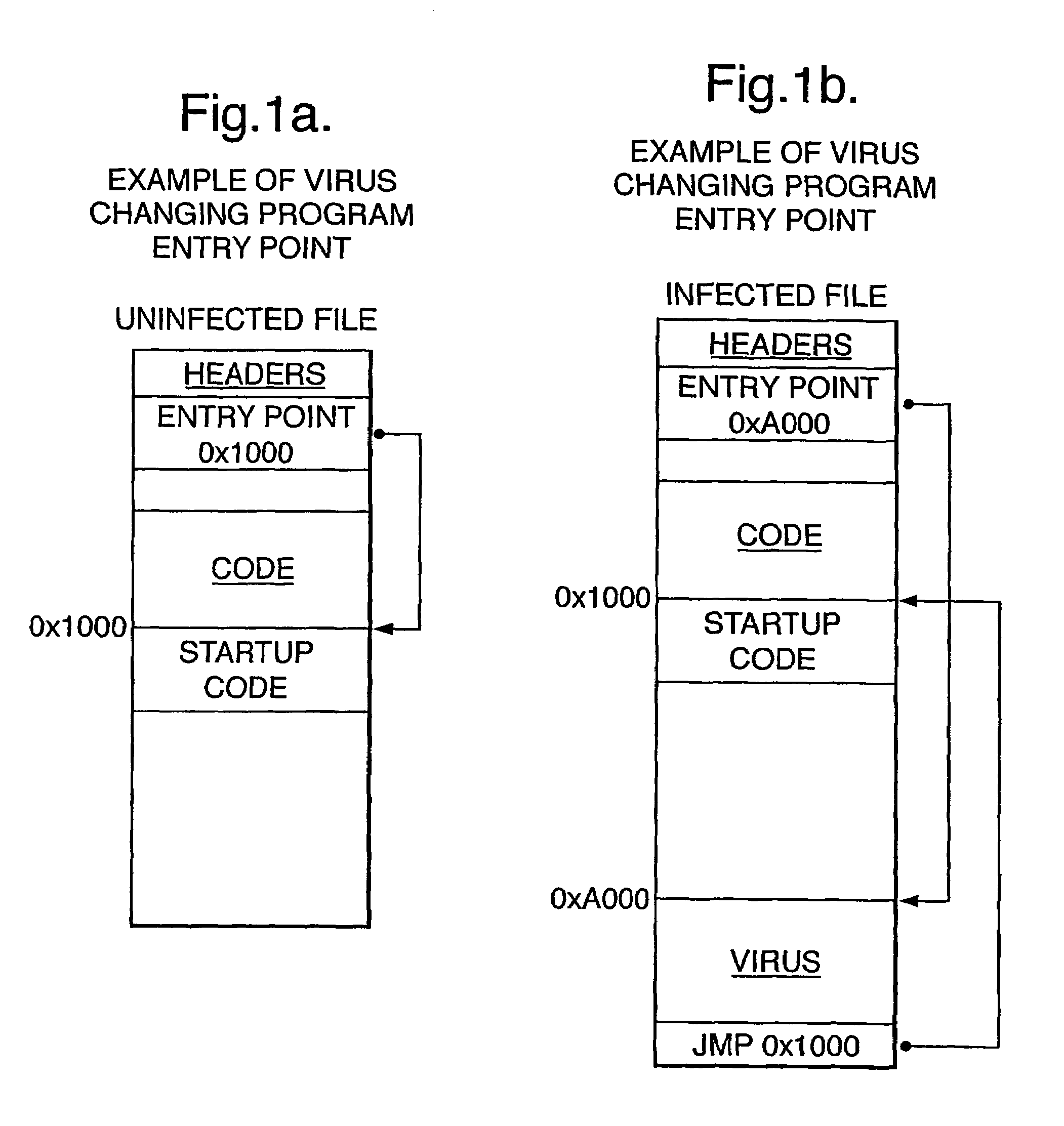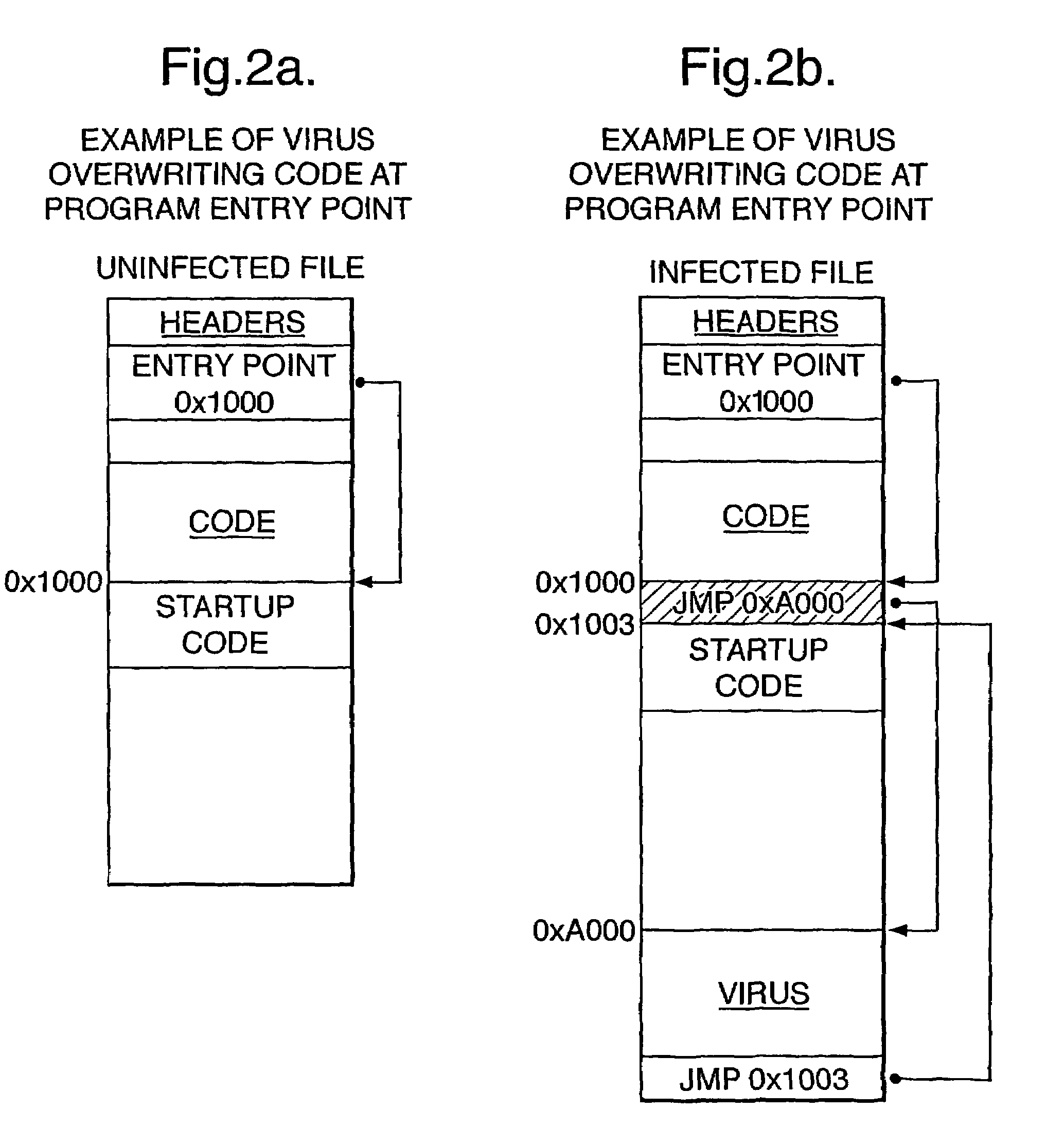Method of, and system for, heuristically detecting viruses in executable code
a technology of executable code and detection method, applied in the field of heuristically detecting viruses in executable code, can solve problems such as a significant amount of time and some skill
- Summary
- Abstract
- Description
- Claims
- Application Information
AI Technical Summary
Benefits of technology
Problems solved by technology
Method used
Image
Examples
Embodiment Construction
[0019]Before proceeding with the description of the illustrated embodiment of the invention, some terms will be explained.
[0020]MD5 (message digest 5) checksum. MD5 is a one-way hashing algorithm—it generates a large number (the MD5 checksum) after analysing a byte stream—such as a file. The chances of two files generating the same large number are very small. It is also very difficult to create a file which will generate any particular MD5 checksum.
[0021]False positive: A false positive occurs when an anti-virus product identifies a particular file as being malware, whereas in fact it is not.
[0022]Regular expression: Regular expressions are strings which can be used to express patterns for pattern matching purposes. For instance, the perl regular expression
/ ^hello [0-9]+ /
[0023]matches any string starting with the letters ‘hello’, then a space, then one or more digits. Some languages such as perl have native support for regular expressions; for others, libraries are available which ...
PUM
 Login to View More
Login to View More Abstract
Description
Claims
Application Information
 Login to View More
Login to View More - R&D
- Intellectual Property
- Life Sciences
- Materials
- Tech Scout
- Unparalleled Data Quality
- Higher Quality Content
- 60% Fewer Hallucinations
Browse by: Latest US Patents, China's latest patents, Technical Efficacy Thesaurus, Application Domain, Technology Topic, Popular Technical Reports.
© 2025 PatSnap. All rights reserved.Legal|Privacy policy|Modern Slavery Act Transparency Statement|Sitemap|About US| Contact US: help@patsnap.com



